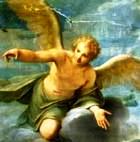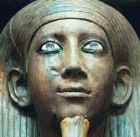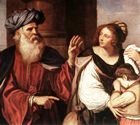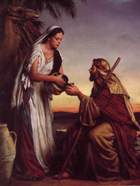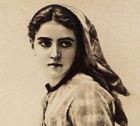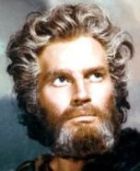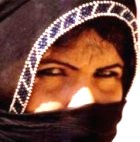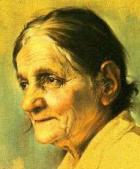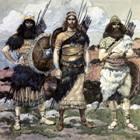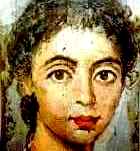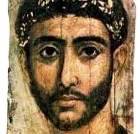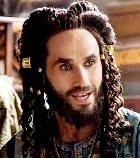The ancient world of the Bible
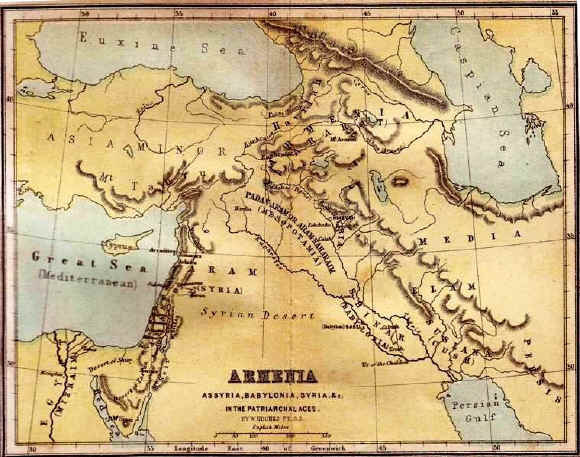
Assyria and Babylonia in the Age of the Patriarchs and Matriarchs.
Bible People in this time: Abraham, Sarah, Hagar, Isaac, Ishmael, Rebecca, Jacob, Esau, Rachel, Leah, Dinah, Judah, Tamar, Joseph, Benjamin
Bible map: Look in the bottom right of the map above (you can click on it to enlarge). You will see Ur of the Chaldees, near the conjunction of two great rivers, the Tigris and the Euphrates. This is where Abraham and Sarah came from. It was rich country land, watered by a sophisticated irrigation system.
So why did they leave? Drought? Unlikely. Civil unrest as one dynasty collapsed and another fought for power? Or invasion from the mountains to the north? This is more possible.
Whatever the reason, they took their flocks and travelled north, looking for pastures for their sheep and goats, and safety for themselves. They eventually arrived in the land we now call Israel, far to the west of their original home, and then went south into Egypt.
Returning north after some rather odd adventures, they and their descendants settled in Israel (middle left of map) – though not in one place, since they were nomadic herdsmen who travelled to find good pastures for their flocks.
The Patriarchs and Matriarchs
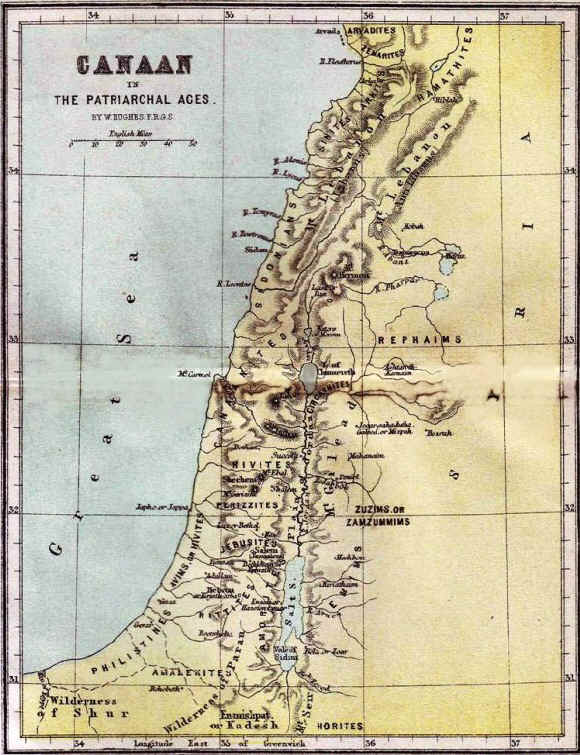
Canaan, the Land of Milk and Honey.
Bible People in this time: Abraham, Sarah, Hagar, Isaac, Ishmael, Rebecca, Jacob, Esau, Rachel, Leah, Dinah, Judah, Tamar, Joseph, Benjamin
Bible Map: The land they entered was already occupied by a population much more sophisticated than their own. The Canaanites had cities, government, kings, full-time armies – unlike Abraham’s people who were nomads with tribal leaders and a militia made up of ordinary tribesmen.
Many groups of people lived there – mostly in the northern area, where the soil was more fertile.
Notice the northern port cities, rich trading centres who were in contact with the Cretan and Mycenean civilizations.
Ancient Egypt and the Sinai
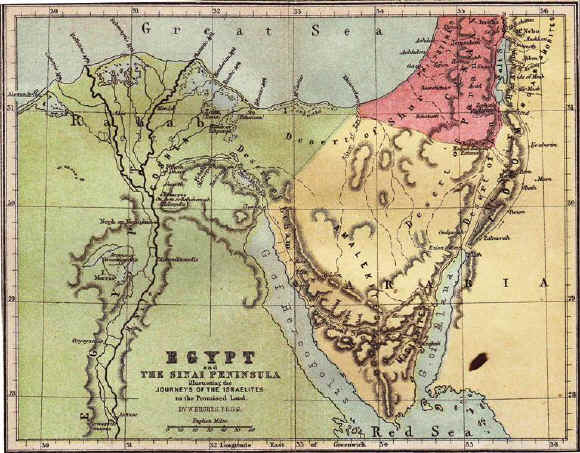
Ancient Egypt and the Sinai Peninsula.
Bible People: Abraham, Sarah, Hagar (who was Egyptian), Ishmael, Judah, Joseph, Benjamin, Moses, Miriam, possibly Ramesses II and/or Seti I, the Pharaohs in the Moses saga.
Bible map: Egypt lay to the south-east of Israel, and had been civilized for thousands of years. It was feared and envied by the nomadic herdsmen who occasionally visited it, especially if there was a drought and famine, as there was in the time of Joseph, son of Judah.
It was also the birthplace of Moses, the country from which he led the Hebrews in their bid for freedom.
The river valley of the Nile was rich and fertile, but notice the Desert of Shur, a formidable obstacle between Canaan (later Israel) and Egypt. It was here that Hagar and Ishmael became lost. They would have died, were it not for the Angel (see What is an Angel?) who showed Hagar where to find water.
Canaan and the Hebrew tribes
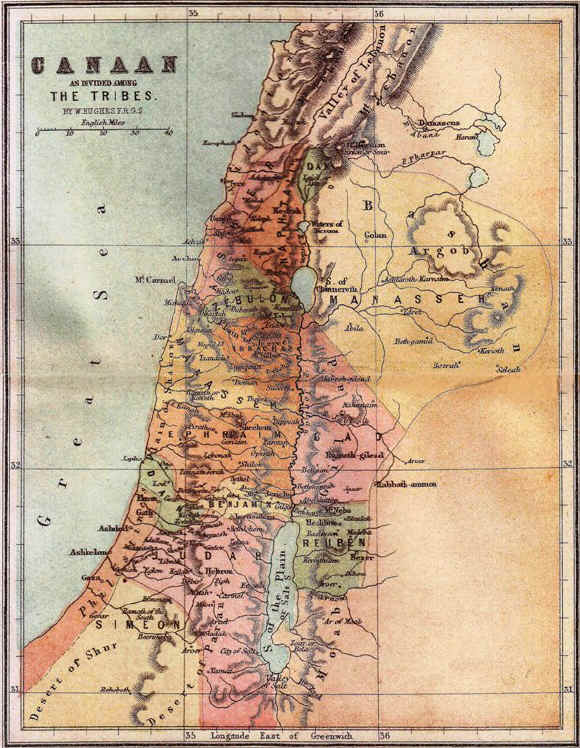
Canaan – territory of the Tribes of Israelites.
Bible People: Moses, Miriam, Joshua, Rahab the prostitute, Deborah, Barak, Jael, Gideon, Ruth and Naomi, Boaz, Jephtah, Samson, Delilah, Ehud and the unfortunate Eglon
Bible Map: When Moses led the Hebrew tribes out of Egypt and Joshua continued into the Promised Land, they entered a land already densely populated.
The Bible tells us that various territories were allocated to each of the twelve tribes, implying that the Hebrews settled there immediately, but in fact Hebrew penetration of Canaanite territory must have happened gradually, over a long period of time.
The map above shows the territories allocated to each of the twelve tribes. The area later occupied by Jerusalem (in the lower third, middle, of the map) was in the territory promised to the Tribe of Benjamin.
Kingdom of David and Solomon
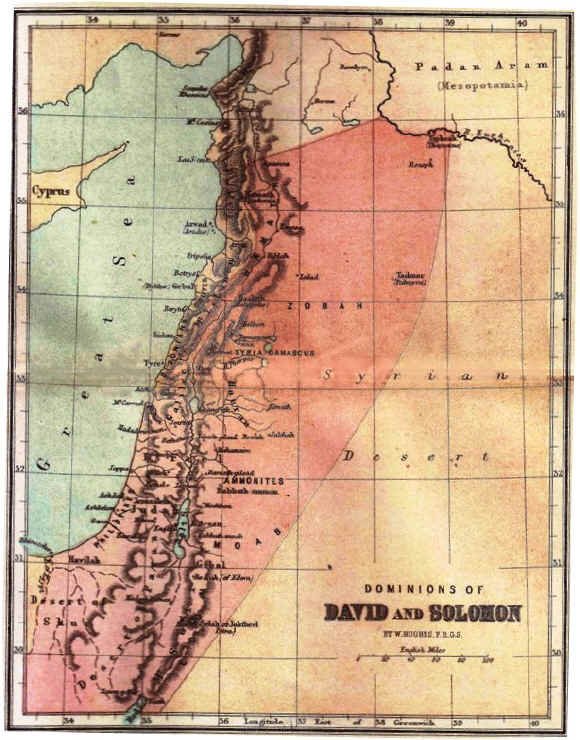
The Kingdom of David and Solomon.
Bible People: Saul, David, Samuel, Michal, Jonathan, Abigail, Nathan, Tamar (David’s daughter), Absalom, Bathsheba, Solomon
Bible Map: Saul began the consolidation of the tribes, and David continued it. He was an unscrupulous bounder and cad, but also an excellent military commander who put Judah/Israel on the map, so to speak. He moved the capital of his kingdom from Hebron, the old sacred city, to Jerusalem, the new one – Jerusalem was more centrally located and easily defended than Hebron.
When David died, his son Solomon pulled the kingdom into shape by setting up an efficient central government and making alliances with surrounding territories and states.
While this made good political sense, it was not popular with ordinary people, since they were the ones paying the many new taxes.
Kingdoms of Judah and Israel
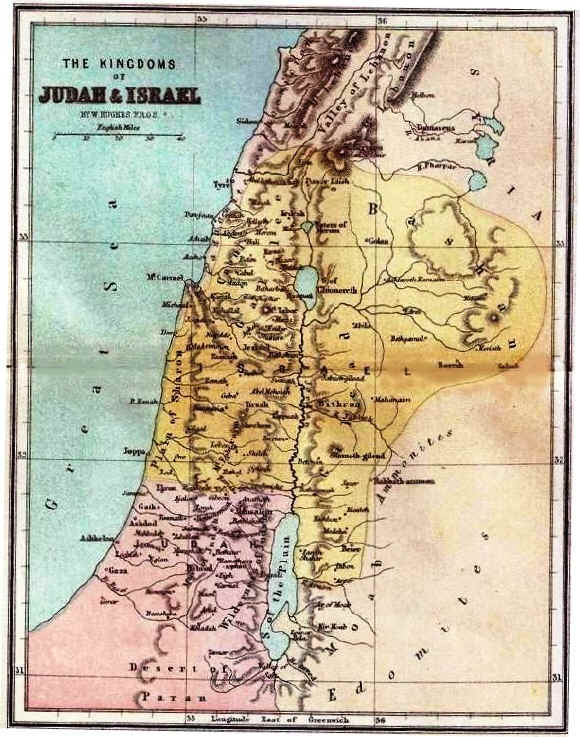
Kingdoms of Judah and Israel.
Bible People: Rehoboam, Jezebel, Ahab, Elijah, Athaliah, Hezekiah, Isaiah, Jeremiah, Ezekiel
Bible Map: Soon after Solomon’s death, the ten northern provinces broke away from the Kingdom, and formed their own, called the Kingdom of Israel.
The country was now broken in two: large, prosperous, fertile Israel in the north, and small, politically unimportant Judah in the south – though this is not the image of Judah you will find in the Bible.
Ancient Assyria
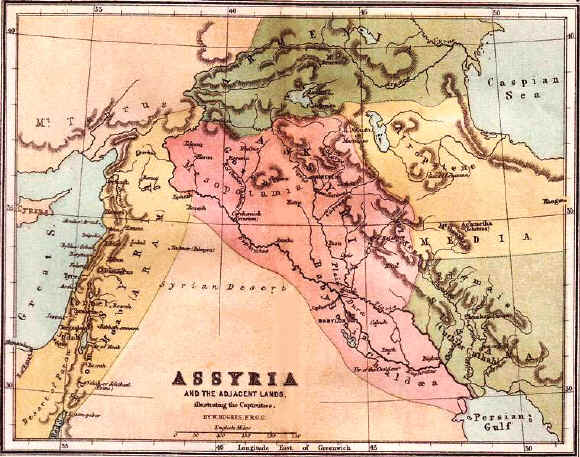
Ancient Assyria.
Bible People: Nehemiah, Daniel, Ezra
Bible Map: The Assyrians deported many people from Israel towards the end of the 8th century BC. They became the Ten Lost Tribes.
But it was the men and women of Judah who settled in various Babylonian regions, especially the large commercial city of Nippur, who were important. They included most of the political, social and religious leaders of the country, and they felt a special responsibility to preserve Jewish culture.
In the time of Jesus of Nazareth
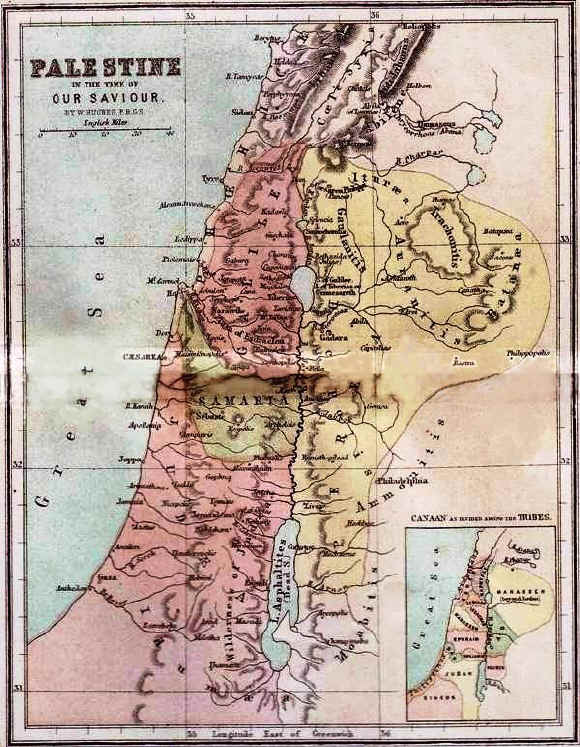
Biblical Lands in the time of Christ.
Bible People: Jesus of Nazareth, Mary Magdalene, Peter, Herod the Great, Herod Antipas, Pontius Pilate, Martha and Mary, the Wife of Pilate, John the Baptist
Bible Map: At the time of Jesus, Judaea was a province in the Roman Empire, ruled by King Herod (when Jesus was a small boy).
Later, after King Herod’s death, the southern part of the country, which contained Jerusalem, was ruled by a Roman governor, and the northern part, which included Galilee (and Nazareth) was governed by the son of Herod the Great, Herod Antipas.
Jerusalem and the surrounding country
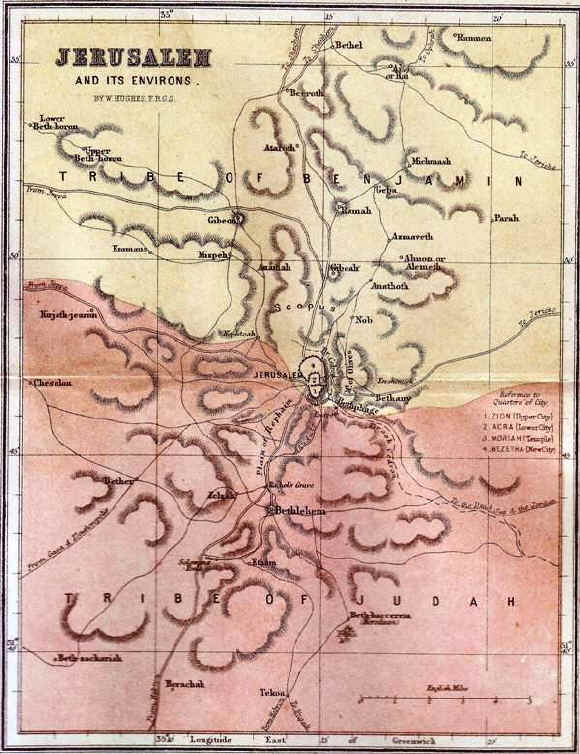
Jerusalem and the surrounding land.
Bible People: Jesus of Nazareth, Mary Magdalene, Peter, Herod the Great, Pontius Pilate, Martha and Mary, the Wife of Pilate
Bible Map: This map shows the position of Jerusalem in its landscape – not a very comfortable environment. The land was rocky, relatively infertile, and hilly. In fact the reason that King David had chosen the site in the first place was that it had a small, almost impregnable, fortress on the spine of one of these rocky hills.
You can see the valley that ran along the right side of the city. To the right of this valley is the village of Bethany, where Jesus had friends – Mary, Martha and Lazarus.
Remember the night when Jesus attacked the money-changers in the Temple, and then prayed in the Garden of Olives. How tempting it must have been: all he had to do to escape his enemies was cross that valley, go up the hill to his friends’ house at Bethany, then head out into the open countryside – to safety. But he stayed…
Bible Study Resource for Women in the Bible
Maps of Israel, Judah, and surrounding countries

